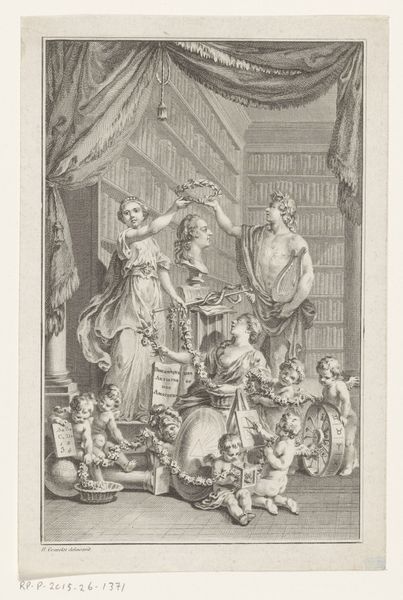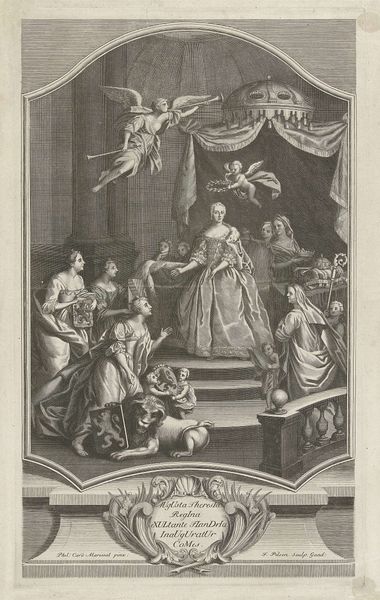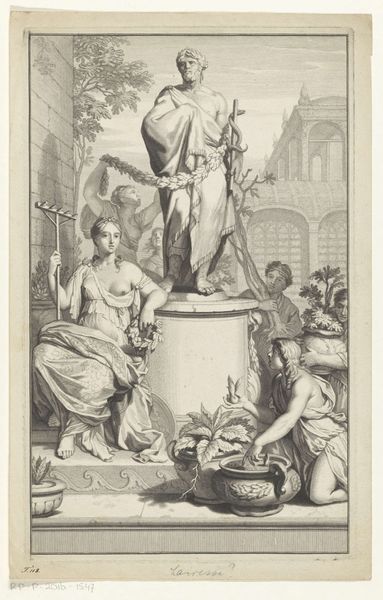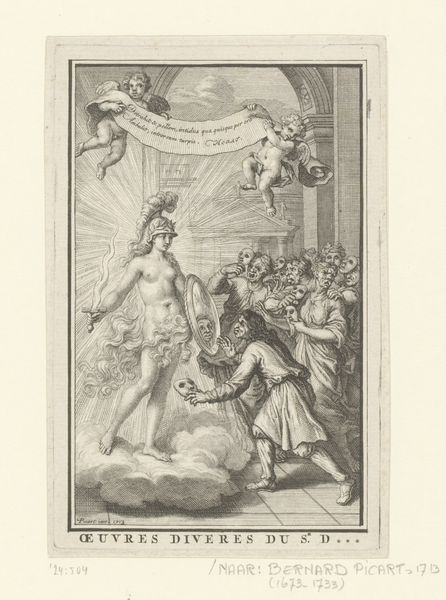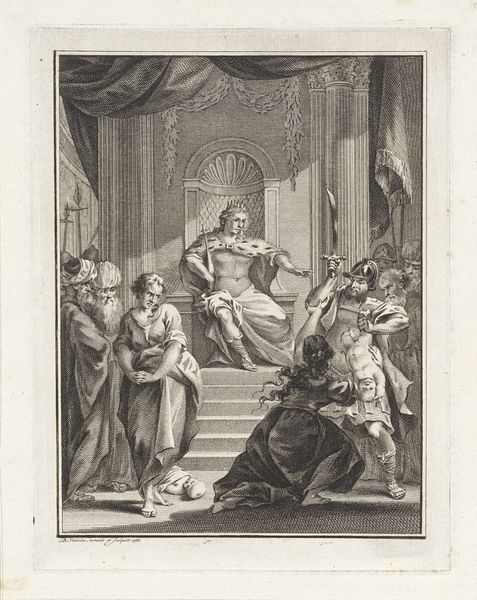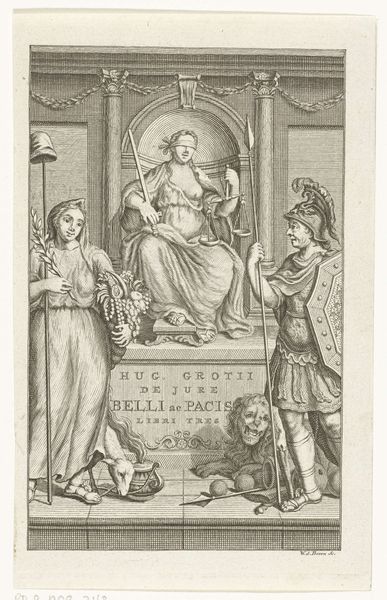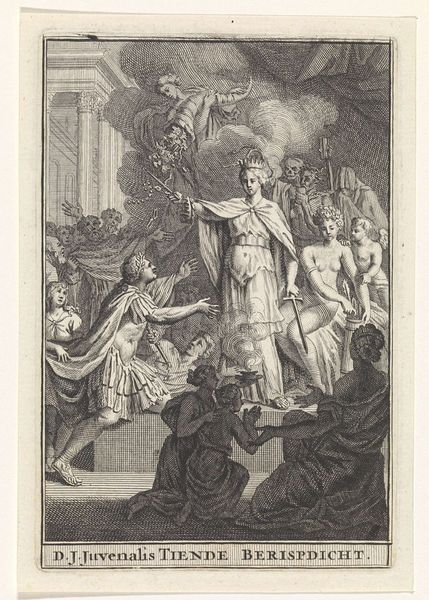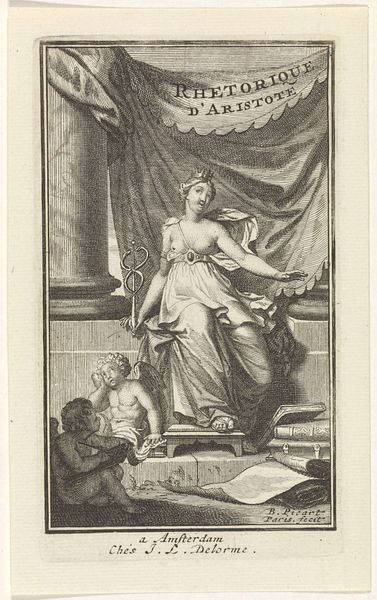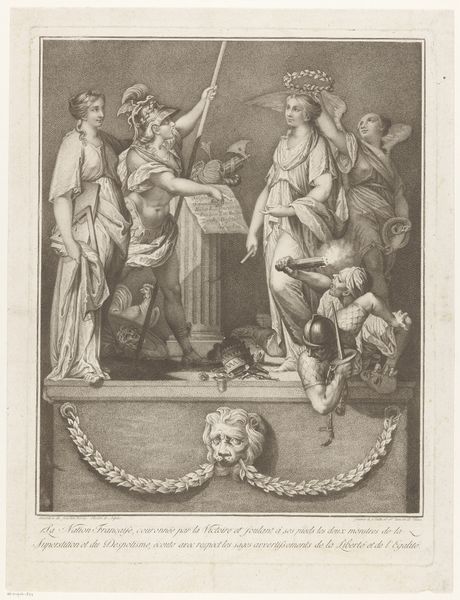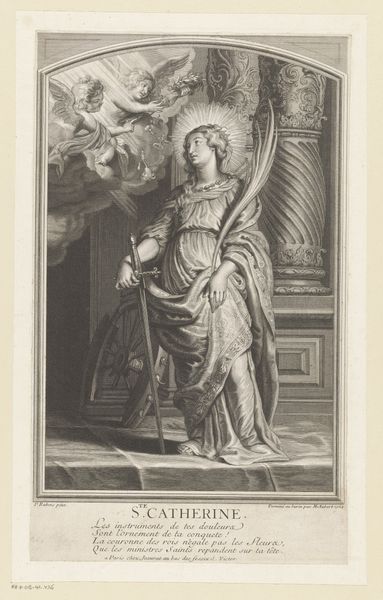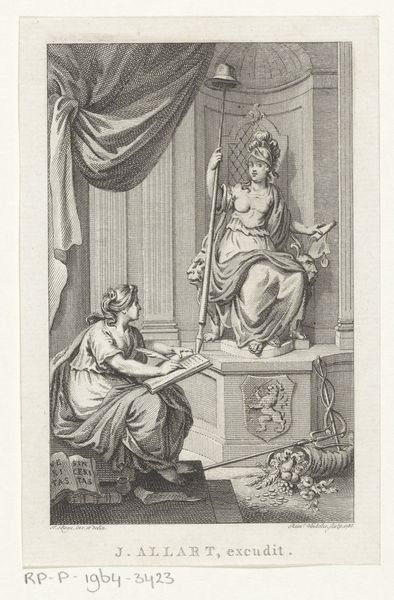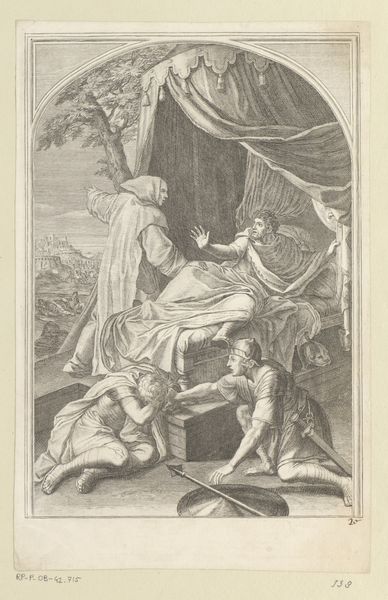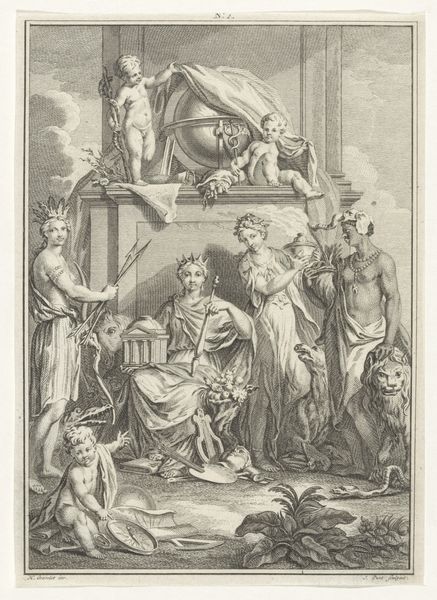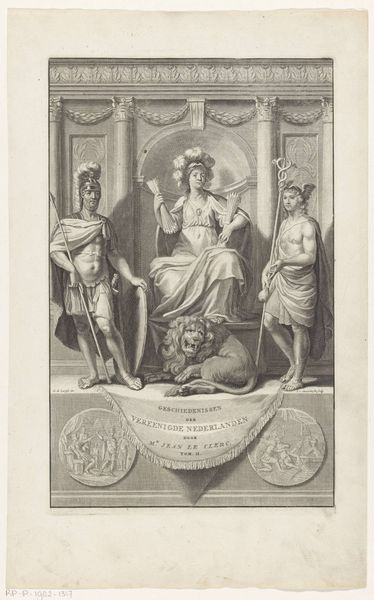
print, engraving
#
portrait
#
allegory
#
baroque
#
dutch-golden-age
# print
#
classical-realism
#
portrait drawing
#
history-painting
#
engraving
Dimensions: height 347 mm, width 226 mm
Copyright: Rijks Museum: Open Domain
Curator: Today, we’re observing Pieter Tanjé’s engraving, "Stedenmaagd van Amsterdam," created sometime between 1746 and 1748. It resides here at the Rijksmuseum. What is your first reaction to it? Editor: A striking image, formal and almost austere, but tempered with these charming cherubic figures at the base. The drape overhead certainly contributes to the classical gravity of the work. Curator: Yes, that combination is compelling! Considering it’s an engraving, it begs the question: What kinds of paper and inks were typically available to Tanjé during that period? These material considerations underpin the final product and its dissemination. Editor: Good point, yet it strikes me foremost as a rich allegory. The central figure, Amsterdam personified, holds a shield, symbolising defense. And the figure to her left, balancing scales, represents Justice. This interplay of civic virtue through potent, time-honored visual symbols—it really anchors the piece in the collective imagination. Curator: And that open book being read by those cherubs? A representation, perhaps, of public knowledge being newly recorded, or the historical archive being added to. Also how widely and at what cost could copies be made to create the print for popular use. It makes one reflect on notions of accessible learning and evolving social constructs during that era. Editor: Precisely! See, those cherubs don’t just provide cute relief; they actively engage with documents and scores, signifying the intellectual spirit and artistic flourishing of Amsterdam. The inclusion of scales is crucial for its impact; the careful use of universally understood imagery elevates the message. Curator: It shows us just how crucial materiality and cultural context are intertwined! Examining its means of production allows us insight into who had access to it, shaping what meanings it can transmit. Editor: I'd concur. And by deciphering the layers of symbolism within the images in works like these, we find direct channels into the very values and beliefs that have stood the test of time. Curator: Absolutely! Looking at the work again I now notice other works that the paper could be re-used on top of at the end of it's life. Editor: It's left me thinking about how powerful the use of consistent symbols are when visualizing the civic image of the city.
Comments
No comments
Be the first to comment and join the conversation on the ultimate creative platform.
